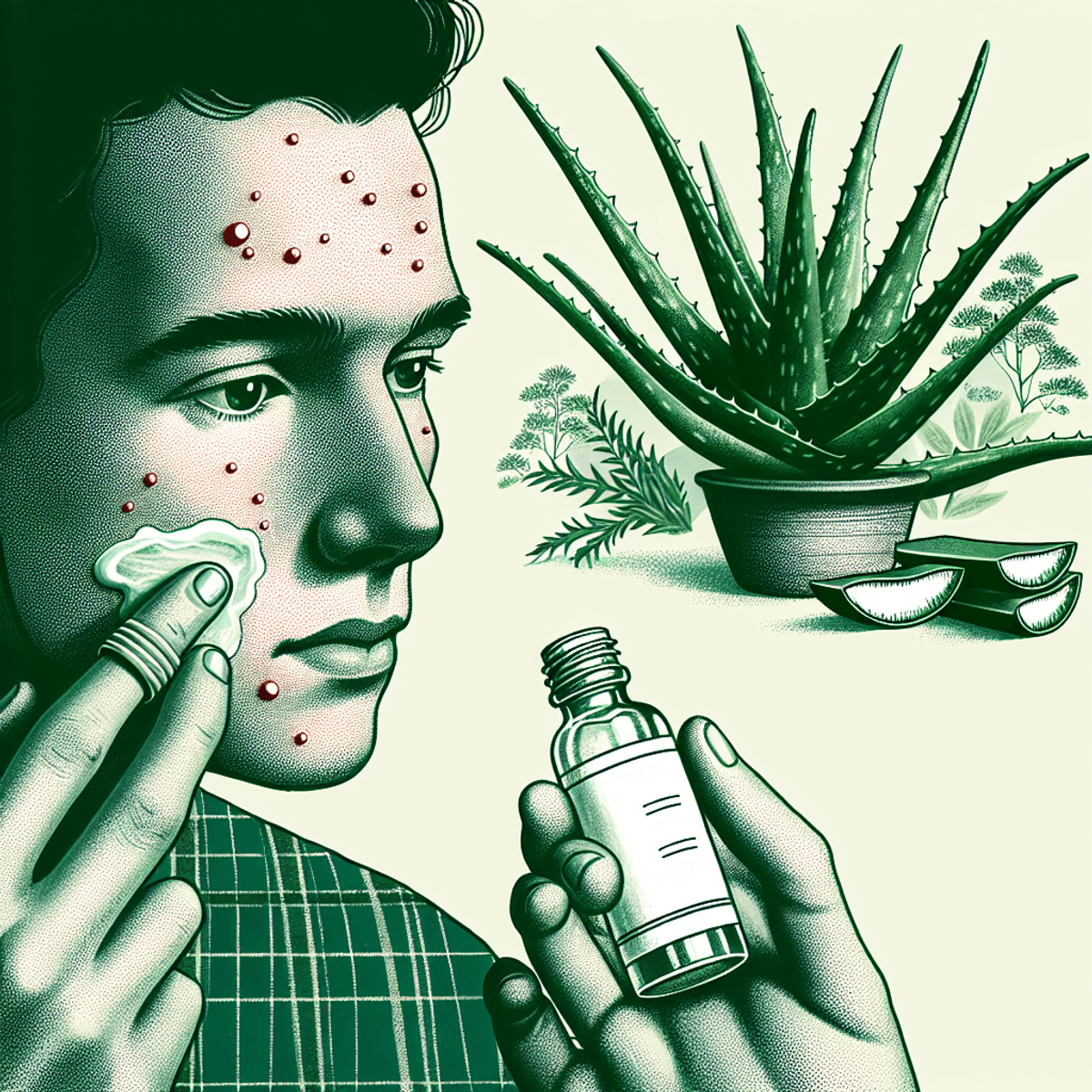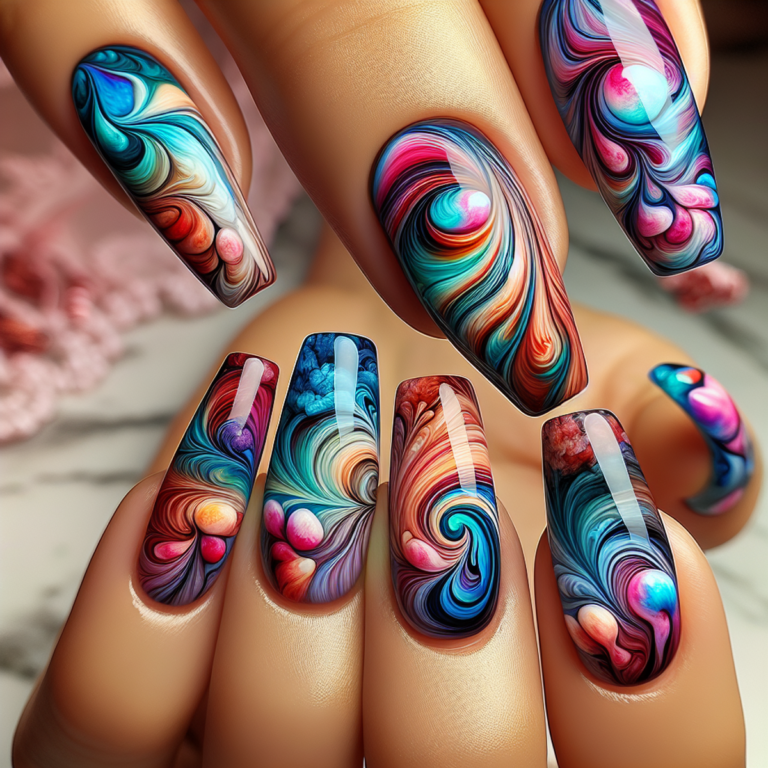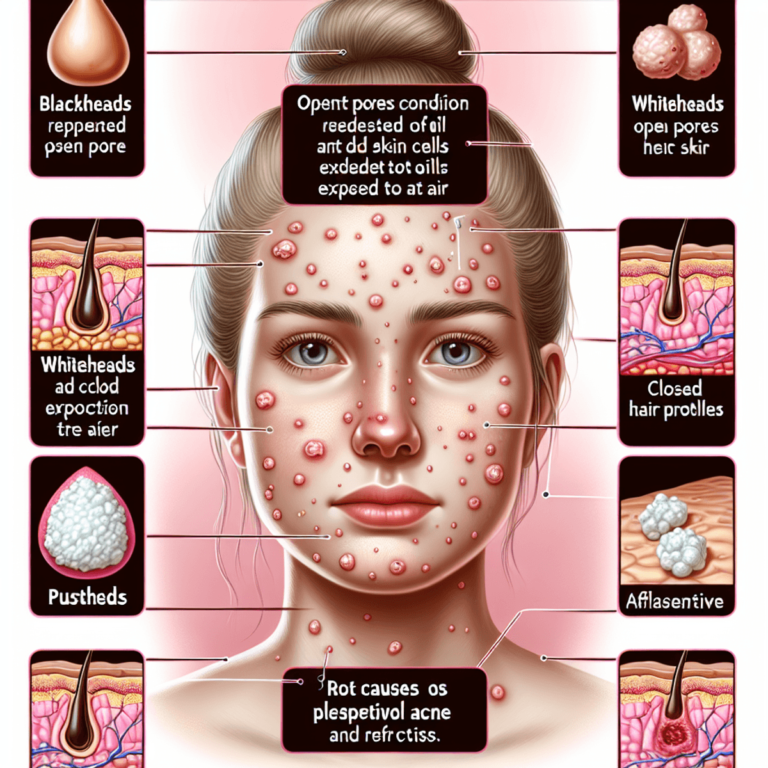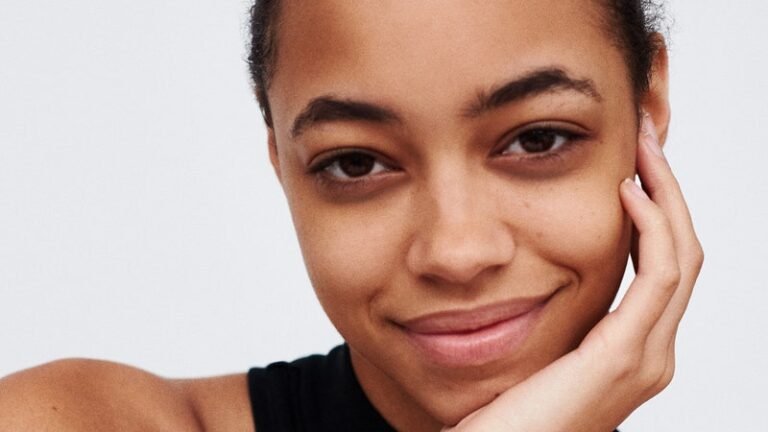How to Get Rid of Pimples with Aloe Vera Gel

Introduction
Dealing with pimples can feel like an endless battle. You look in the mirror, spot a new breakout, and immediately start searching for quick solutions. If you’re tired of harsh chemicals and expensive treatments, aloe vera gel might be the natural remedy you’ve been looking for.
This succulent plant has earned its reputation as a skincare powerhouse. Its clear, gel-like substance contains powerful compounds that can help:
- Reduce inflammation and redness
- Fight acne-causing bacteria
- Speed up healing time
- Minimize scarring
- Moisturize without clogging pores
Aloe vera’s effectiveness lies in its simplicity. You can apply it directly to your skin, mix it with other natural ingredients, or use it as a spot treatment for stubborn pimples. Many people see noticeable improvements within days of consistent use.
The beauty of using aloe vera gel for pimples extends beyond its healing properties. It’s:
- Gentle on sensitive skin
- Cost-effective
- Easy to find or grow at home
- Free from harsh chemicals
- Safe for long-term use
Ready to transform your skincare routine with this natural wonder? Let’s explore exactly how aloe vera gel can help you achieve clearer, healthier skin.
Understanding Pimples and Acne
Pimples come in different types, and each type needs a specific way to treat it. Here’s a detailed explanation of the common types of acne:
1. Whiteheads and Blackheads
- Whiteheads appear as small, white bumps caused by trapped oil and dead skin cells
- Blackheads form when these clogged pores oxidize, creating dark spots on the skin’s surface
2. Papules and Pustules
- Papules present as small, red, tender bumps
- Pustules contain visible pus and often have a white or yellowish center
3. Cystic and Nodular Acne
- Deep, painful bumps filled with pus and fluid
- Can persist for weeks and leave permanent scarring
- Commonly appear on face, chest, back, and buttocks
4. Blind Pimples
- Hard lumps under the skin’s surface
- No visible head or opening
- Often painful and slow to heal
Acne develops due to several main factors:
1. Hormonal Influences
- Increased androgen production during puberty
- Menstrual cycle fluctuations
- Pregnancy-related changes
- Polycystic ovary syndrome (PCOS)
2. Excess Oil Production
- Overactive sebaceous glands
- Genetic predisposition
- Environmental factors like humidity
- Diet and lifestyle choices
3. Bacterial Growth
- P. acnes bacteria thrive in clogged pores
- Inflammation triggers immune response
- Bacterial multiplication leads to pus formation
- Poor hygiene can accelerate bacterial spread
4. External Factors
- Tight clothing friction
- Heavy makeup use
- Excessive sweating
- Certain medications
- High-stress levels
By understanding these different types of acne and what causes them, you can choose the right treatment methods. This could involve using natural remedies like aloe vera or seeking professional medical help when necessary.
Benefits of Aloe Vera for Skin Care
Aloe vera is a versatile plant that offers numerous benefits for skincare, especially for those with acne-prone skin. Its powerful antibacterial properties make it an effective natural remedy against the bacteria responsible for pimples. Additionally, aloe vera’s anti-inflammatory and antioxidant properties contribute to soothing irritated skin and promoting overall skin health.
1. Fights Bacteria and Prevents Breakouts
Aloe vera’s antibacterial properties make it a natural warrior against P. acnes bacteria – the primary culprit behind pimple formation. The plant’s natural compounds, including salicylic acid and sulfur, work together to eliminate harmful bacteria while maintaining your skin’s healthy microbiome.
2. Soothes Irritated Skin
The gel’s anti-inflammatory properties create a soothing effect on irritated skin:
- Reduces redness and swelling around active breakouts
- Calms painful, inflamed areas
- Decreases skin sensitivity
- Minimizes the appearance of existing acne scars
- Speeds up the healing process of damaged skin tissue
3. Provides Antioxidant Protection
Your skin receives powerful antioxidant protection through aloe vera’s rich composition of vitamins A, C, and E. These nutrients:
- Fight free radical damage
- Boost collagen production
- Improve skin elasticity
- Prevent premature aging
- Support cell regeneration
4. Hydrates without Clogging Pores
The plant’s natural moisturizing abilities help maintain optimal skin hydration without clogging pores. Its lightweight consistency allows your skin to breathe while providing essential nutrients and hydration.
5. Heals and Repairs Skin
Key Healing Components in Aloe Vera:
- Auxins and gibberellins – promote wound healing
- Polysaccharides – stimulate skin repair
- Glycoproteins – reduce inflammation and pain
- Zinc – aids in pore cleansing
- Beta-sitosterol – calms skin irritation
Research shows aloe vera’s effectiveness in treating various skin conditions extends beyond acne treatment. The gel’s pH-balancing properties help restore your skin’s natural protective barrier, creating an environment where healthy skin cells thrive and problematic bacteria struggle to survive.
Users report visible improvements in their skin’s texture and clarity within 1-2 weeks of consistent aloe vera application. The gel’s natural compounds work synergistically to create both immediate soothing effects and long-term healing benefits for acne-prone skin.
How to Use Aloe Vera Gel for Pimples
Applying aloe vera gel correctly can make a significant difference in your acne treatment results. Let’s explore the most effective application methods to harness its healing properties.
1. Pure Aloe Vera Application
Preparation Steps:
- Wash your face with a gentle cleanser
- Pat your skin dry with a clean towel
- Extract fresh aloe vera gel or use a high-quality store-bought option
- Test the gel on a small patch of skin before full application
Application Method:
- Apply a thin layer of pure aloe vera gel directly to affected areas
- Use gentle, upward circular motions to massage the gel into your skin
- Let the gel absorb for 15-20 minutes
- Rinse with cool water if desired, or leave it on overnight
Recommended Usage:
- Apply 2-3 times daily for active breakouts
- Use once daily for maintenance and prevention
- Continue application for 4-6 weeks to see optimal results
Tips for Maximum Effectiveness:
- Store fresh aloe vera gel in an airtight container in the refrigerator
- Replace stored gel every 7-10 days to maintain potency
- Use within 24 hours if extracted directly from the plant
- Apply on clean, makeup-free skin
Best Times for Application:
- Morning: After cleansing, before sunscreen
- Evening: After removing makeup and cleansing
- Post-workout: After cleaning sweat and debris
Signs of Progress:
- Reduced redness within hours
- Decreased inflammation in 1-2 days
- Smaller pimple size within 2-3 days
- Faster healing of existing breakouts
- Gradual fading of acne marks with consistent use
Remember to maintain consistent application for best results. Fresh aloe vera gel works best, but high-quality commercial products can serve as convenient alternatives. Your skin might need time to adjust to the treatment, so start with once-daily application and gradually increase frequency based on your skin’s response.
2. Combination Treatments with Aloe Vera
Aloe vera’s effectiveness multiplies when paired with other natural ingredients. Here are powerful combinations you can create at home:
1. Aloe Vera + Honey Mask
- Mix 2 tablespoons fresh aloe vera gel with 1 tablespoon raw honey
- The combination provides double antibacterial action
- Honey’s natural humectant properties lock in moisture while fighting bacteria
2. Aloe Vera + Tea Tree Oil Spot Treatment
- Add 2-3 drops of tea tree oil to 2 tablespoons of aloe vera gel
- Tea tree oil’s potent antimicrobial properties target acne-causing bacteria
- Aloe vera helps prevent the drying effects of tea tree oil
3. Aloe Vera + Cinnamon Paste
- Blend 2 tablespoons aloe vera gel with 1/4 teaspoon cinnamon powder
- Cinnamon’s antimicrobial properties help reduce inflammation
- This combination works best for overnight spot treatments
4. Aloe Vera + Turmeric Mask
- Combine 2 tablespoons aloe vera gel with 1/2 teaspoon turmeric powder
- Turmeric’s anti-inflammatory properties reduce redness
- The mixture helps fade post-acne marks while treating active breakouts
Application Tips:
- Apply these combinations after cleansing your face
- Leave masks on for 15-20 minutes
- Rinse with lukewarm water
- Use 2-3 times per week for best results
- Store any leftover mixture in an airtight container in the refrigerator for up to 3 days
Remember to patch test new combinations on your inner arm before applying to your face to avoid potential reactions.
3. Exfoliation Techniques Using Aloe Vera
Regular exfoliation is crucial in preventing pimples by removing dead skin cells that can clog pores and trap bacteria. Aloe vera’s natural enzymes make it an excellent base for gentle exfoliating scrubs.
Basic Aloe Vera Sugar Scrub Recipe:
- 2 tablespoons fresh aloe vera gel
- 1 tablespoon fine sugar
- 3 drops of tea tree oil (optional)
Mix these ingredients to create a gentle yet effective exfoliating paste. The sugar granules provide physical exfoliation while aloe vera soothes and hydrates your skin.
Aloe Vera Coconut Scrub Recipe:
- 2 tablespoons aloe vera gel
- 1 tablespoon coconut oil
- 1 tablespoon brown sugar
This combination offers dual benefits – coconut oil’s antimicrobial properties help fight acne-causing bacteria while providing moisture to your skin.
Application Tips:
- Cleanse your face with a mild cleanser
- Apply the scrub in gentle circular motions
- Focus on areas prone to blackheads and breakouts
- Massage for 1-2 minutes
- Rinse with lukewarm water
Use these exfoliating scrubs 2-3 times per week for optimal results. People with sensitive skin should start with once-weekly applications and adjust based on their skin’s response.
Caution: Avoid harsh scrubbing motions as this can irritate active breakouts and spread bacteria. Skip exfoliation if you have inflamed or cystic acne until the inflammation subsides.
4. Spot Treatment Methods with Aloe Vera Gel
Spot treatment with aloe vera gel targets specific pimples, providing focused relief for inflamed or painful areas. This method proves particularly effective for reducing redness and swelling overnight.
Steps for Spot Treatment:
- Cleanse the affected area with a gentle face wash
- Extract fresh aloe vera gel or use pure store-bought gel
- Apply a small amount directly on individual pimples
- Leave the gel on overnight
- Rinse with lukewarm water in the morning
Application Tips:
- Use a cotton swab for precise application
- Apply 2-3 times daily for stubborn pimples
- Don’t touch or rub the treated area
- Allow the gel to dry completely
Benefits of Spot Treatment:
- Reduces inflammation within 4-8 hours
- Decreases pain and tenderness
- Minimizes the appearance of redness
- Accelerates healing process
- Prevents scarring
For Cystic Acne:
- Create an ice-cold aloe vera cube
- Wrap in a thin cloth
- Hold against the cystic pimple for 30 seconds
- Apply a layer of room temperature aloe vera gel
- Repeat 3-4 times daily
For Blind Pimples:
- Mix aloe vera gel with 1-2 drops of tea tree oil
- Gently massage the mixture into the affected area
- Apply light pressure to increase absorption
- Repeat application every 4-6 hours
This targeted approach helps manage individual breakouts effectively while preventing the spread of bacteria to surrounding areas. The concentrated application allows the gel’s antibacterial and anti-inflammatory properties to work directly on problem spots.
Additional Tips for Maximizing Results with Aloe Vera Gel
A successful aloe vera treatment routine requires careful planning and attention to detail. Here’s how to optimize your results:
Perform a Patch Test First
- Apply a small amount of aloe vera gel behind your ear
- Wait 24 hours to check for any adverse reactions
- Look for signs of redness, itching, or irritation
- If no reaction occurs, proceed with facial application
Smart Application Techniques
- Use clean hands or cotton swabs for application
- Apply aloe vera gel on freshly cleansed skin
- Wait for the gel to dry completely before applying other products
- Store your aloe vera gel in the refrigerator for enhanced cooling effects
Complementary Treatments
- Pair aloe vera with:
- Benzoyl peroxide for deep, cystic acne
- Salicylic acid for blackheads
- Niacinamide for oil control
- Tea tree oil for bacterial acne
Timing Matters
- Apply aloe vera gel twice daily for best results
- Use it after cleansing but before moisturizing
- Allow 5-10 minutes between layers of different products
- Consider using it as an overnight treatment
Product Selection Tips
- Choose pure aloe vera gel without added fragrances
- Look for products with at least 95% aloe vera content
- Avoid gels containing alcohol or artificial colors
- Consider harvesting fresh aloe vera for maximum potency
Usage Guidelines
- Start with a thin layer and increase gradually
- Don’t mix with harsh exfoliants in the same application
- Use consistently for at least 4-6 weeks
- Document your progress with photos to track improvements
Remember to maintain realistic expectations – aloe vera works gradually, and results vary based on skin type and acne severity.
Addressing Underlying Causes of Acne Alongside Topical Treatments
Aloe vera gel works best when you tackle acne’s root causes. Your skin tells a story about what’s happening inside your body, particularly regarding hormonal changes and internal imbalances.
Key Internal Factors Affecting Acne:
- Hormonal Fluctuations: Birth control changes, menstrual cycles, and stress trigger oil production
- Digestive Health: Poor gut health links directly to skin inflammation
- Diet: Dairy products and high-glycemic foods can worsen acne
- Sleep Quality: Inadequate rest impacts hormone regulation
- Hydration Levels: Dehydration forces oil glands to overproduce sebum
Creating a Balanced Skincare Routine:
1. Morning Routine
- Gentle cleanser with pH-balanced formula
- Alcohol-free toner
- Aloe vera gel application
- Non-comedogenic moisturizer
- Broad-spectrum sunscreen
2. Evening Routine
- Double cleansing method
- Chemical exfoliant (2-3 times weekly)
- Aloe vera treatment
- Night repair cream
Lifestyle Adjustments for Clear Skin:
- Drink 8-10 glasses of water daily
- Include zinc-rich foods in your diet
- Practice stress-reduction techniques
- Change pillowcases twice weekly
- Keep hair clean and away from face
Internal Support Methods:
- Consider supplements like omega-3s
- Track your hormonal cycles
- Monitor food sensitivities
- Maintain regular exercise routine
- Get 7-9 hours of quality sleep
A holistic approach combines topical treatments with internal healing. While aloe vera addresses surface inflammation, these underlying factors determine your skin’s long-term health. Regular consultation with healthcare providers helps monitor hormonal changes and adjust treatments accordingly.
Precautions When Using Aloe Vera Gel For Pimples
Using aloe vera gel requires careful attention to prevent adverse reactions. A patch test on a small area of skin is essential before applying it to your face or body, including sensitive areas like buttocks or legs.
Common Side Effects:
- Skin redness and irritation
- Burning sensation
- Itching or stinging
- Increased skin sensitivity
- Allergic reactions (rare)
Signs to Stop Usage:
- Development of rashes
- Persistent burning
- Severe itching
- Skin discoloration
- Increased breakouts
Safe Usage Guidelines:
- Use pure, organic aloe vera gel
- Apply a thin layer
- Start with once-daily application
- Avoid contact with open wounds
- Store properly in cool, dark places
Your skin‘s reaction to aloe vera can vary based on sensitivity levels and existing skin conditions. Some users experience temporary burning sensations when applying aloe vera to inflamed areas – this typically subsides within minutes.
Seek Medical Attention If:
- Allergic reactions persist beyond 24 hours
- Severe swelling occurs
- Breathing difficulties develop
- Skin becomes extremely irritated
- Existing acne worsens significantly
A dermatologist can provide personalized advice and alternative treatment options if aloe vera isn’t suitable for your skin type. They might recommend specific formulations or combinations with other treatments for optimal results.
Conclusion
Aloe vera gel is a powerful natural remedy for pimples. When used correctly and consistently, it can help you achieve clearer, healthier skin.
But your journey to clear skin doesn’t have to end with aloe vera. There are other natural remedies you can explore:
- Tea tree oil for its strong antibacterial properties
- Green tea extracts to reduce inflammation
- Apple cider vinegar as a natural toner
- Honey masks for deep cleansing
An effective acne management strategy involves a holistic approach:
- Consistent Skincare RoutineRegular cleansing
- Proper moisturizing
- Sun protection
- Lifestyle ModificationsBalanced diet
- Adequate hydration
- Quality sleep
- Stress management
- Professional GuidanceRegular dermatologist check-ups
- Personalized treatment plans
- Progress monitoring
Remember that clear skin takes time and commitment. Your skin may react differently to aloe vera and other treatments, so it’s important to stay dedicated in finding what works best for you. By combining the natural healing properties of aloe vera with mindful skincare practices, you’re making significant progress towards achieving the clear, healthy complexion you desire.
FAQs (Frequently Asked Questions)
What is aloe vera gel and how can it help with pimples?
Aloe vera gel is a natural remedy known for its antibacterial, anti-inflammatory, and antioxidant properties. It can help treat pimples by soothing irritated skin, reducing inflammation, and fighting acne-causing bacteria.
How do I apply aloe vera gel to get rid of pimples?
To use aloe vera gel for pimples, apply pure aloe vera gel directly onto the affected areas. It is recommended to do this once or twice daily for maximum effectiveness. Leave it on for at least 30 minutes before rinsing off.
Can I use aloe vera gel overnight to treat pimples?
Yes, you can apply aloe vera gel overnight. Its soothing properties make it ideal for overnight treatment. Simply apply a thin layer on the affected areas before bed and wash it off in the morning.
Are there any combination treatments with aloe vera that are effective for acne?
Yes, combining aloe vera with ingredients like honey, cinnamon, or tea tree oil can enhance its effectiveness against acne. These combinations leverage the antibacterial and anti-inflammatory benefits of each ingredient to target pimples more effectively.
How does aloe vera help in removing pimple scars?
Aloe vera aids in pimple scar removal by promoting skin healing and regeneration due to its antioxidant effects. Regular application can help fade scars over time and improve overall skin texture.
What are some common causes of pimples and acne?
Common causes of pimples include hormonal imbalances, excess oil production, clogged pores, and bacterial growth on the skin. Understanding these factors can help in managing and preventing future breakouts.










